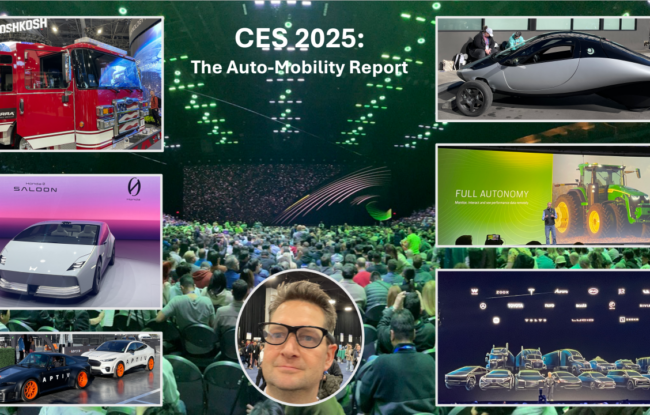This article was first published by Generation.e on 26th of June 2020 for the preparation of the Smarter Mobility Europe Live.
Should we replace all internal combustion engine (ICE) cars with electric vehicles (EVs)?
Globally, 2.7% of new car sales are electric and this share is expected to reach 28% by 2030, according to BNEF.[1] Global automakers expect to spend $300 bn over the next five to 10 years exclusively on EVs[2] — equivalent to the global R&D investment of the industry for the last three years.[3]
One of the direct impacts of these investments will be a greater portfolio of EVs offered to people. By 2022, over 500 different electric models will be available to purchase. The ultimate expected outcome is to multiply the current global electric fleet by almost 14 within this decade to reach a total of 116 million EVs.[4]
There’s no doubt that consumers will (finally) have greater choices available to replace their ICE car. But should they?
Roger Atkins, one of the global electric vehicle top voices and host of the Smarter Mobility Europe LIVE summit, raises that concern. His extensive experience in the automotive sector and his interest in worldwide sustainability challenges make Roger believe that “We should not push for mass EV adoption.” Roger believes that new technologies should be implemented in harmony with their ecosystem. This last term should be understood through its holistic definition including three pillars: social, economic and environmental factors.
As a result, to optimise the efficiency offered by EVs, we need to maximise their utilisation. “Simply switching from an ICE car to an EV does not maximise the utilisation,” Roger says, adding, “this would not solve any of our mobility problems.” In his view, we could only leverage the full benefits of EVs if we focus on 4 factors:
First, the battery components. Storing electricity currently requires three main elements: lithium, cobalt and nickel. In addition, copper is an essential metal to produce electric engines. The rise of EVs increases the demand for these materials.
Electric cars use twice as much copper as internal combustion engines.[5] The majority of cobalt consumption comes from the battery industry. There were 70,000 tons of cobalt extracted in 2019 for batteries and the production is expected to jump to 300,000 tons by 2029, mainly due to the surge in EV production.[6] Yet there are concerns about the social, ethical and ecological standards regarding the mining of these minerals.
There is progress in the production of batteries with a reduced share of cobalt, but scientists are still struggling to use alternative materials. One of the ways to decrease the pressure on mineral extraction is, as Roger suggests, to increase the utilisation of EV with shared mobility services.
Second, shared mobility service (vs private ownership). “The real revolution will come with sharing,” according to Roger. With private ownership, people keep their old mobility habits, and even the electrified car is parked 95% of the time, adding to congestion and the inefficient use of public space. In Roger’s view, owning a car “is a waste of resources”. We at Neckermann Strategic Advisors agree fully.
Looking at a global scale, moving to a shared mobility model makes even more sense. The regions of the world with the highest population growth and increase in terms of urbanisation rate are Asia and Africa. There is a significant opportunity to leap-frog, and learn from the mistakes of the currently industrialised world, and focus on shared, electric mobility while developing new megacities.


Third, energy production. Powering electric vehicles with dirty energy production does not make sense. It is critical for the mobility industry to work in symbiosis with energy providers to develop cleantech and charge batteries with environmental-friendly sources and facilities. Roger notes that the Chinese term for EVs is “New Energy Vehicle (NEV)”.
Last but not least, the recycling of batteries. To close the loop, it is important to not only consider the extraction of the minerals but also their reconversion.
This enables what’s called the circular economy. Reusing resources is fundamental to unlocking the full sustainability potential of the Mobility Revolution.
Many may believe,“let’s try first to sell EV before thinking about recycling them.” It took 60 months to sell the first million EVs (from 2011 to 2016), while it only required less than half a year to sell an additional million units. Each million produces 250k tons of batteries to recycle in the next 10 years.[7]
Over 1,550 GWh of batteries will be required by 2030 to power the EV industry.[8] For comparison, the biggest US nuclear energy plant has a capacity of “only” 4 GWh — this presents an enormous energy storage opportunity. OEMs and battery producers are, fortunately, already engaged in the reuse and recycling of batteries. Some estimates even suggest that by 2040, the net requirement of new lithium and other minerals for batteries will approach zero, as 100% of batteries in use will be recycled.
In sum, it is important to focus on what really matters. There are few benefits to simply switching from ICEs to EVs. However, the holy grail would come from reflecting on the manufacturing and usage of our vehicles.
The pandemic is certainly accelerating this reflection and fast track mobility trends. Roger concludes that, “looking back at COVID-19 in a few years, we could see this crisis — despite its dire consequences, as the perhaps best thing that ever happened in the world to change our unsustainable trajectory.”
[1] https://about.bnef.com/electric-vehicle-outlook/
[2] https://uk.reuters.com/article/uk-autoshow-detroit-electric-exclusive/exclusive-vw-china-spearhead-300-billion-global-drive-to-electrify-cars-idUKKCN1P40GI#:~:text=(Reuters)%20%2D%20Global%20automakers%20are,battery%20and%20electric%20vehicle%20technology
[4] https://about.bnef.com/electric-vehicle-outlook/
[5] https://www.euractiv.com/section/batteries/news/tesla-expects-global-shortage-of-electric-vehicle-battery-minerals-sources/
[6] https://www.theguardian.com/environment/2020/jan/05/cutting-cobalt-challenge-battery-industry-electric-cars-congo
[7] https://www.nature.com/articles/s41586-019-1682-5
[8] Statista 2019


